A Draped Chronicle: The Saree’s Journey Through Time
The saree is more than an attire; it becomes a storyteller. Every embroidery has its whisper from the yesteryears, and draping it gives an echo of history. The kings and queens, the warriors, poets, and revolutionaries wore it with all fairness and stood still in the annals of time. Donning a saree is to embrace the legacy that echoes over millennia, an utterly unbroken stream of tradition threading generations of women across the centuries. It reflects wealth, culture, and artistry, woven together with love and tradition.
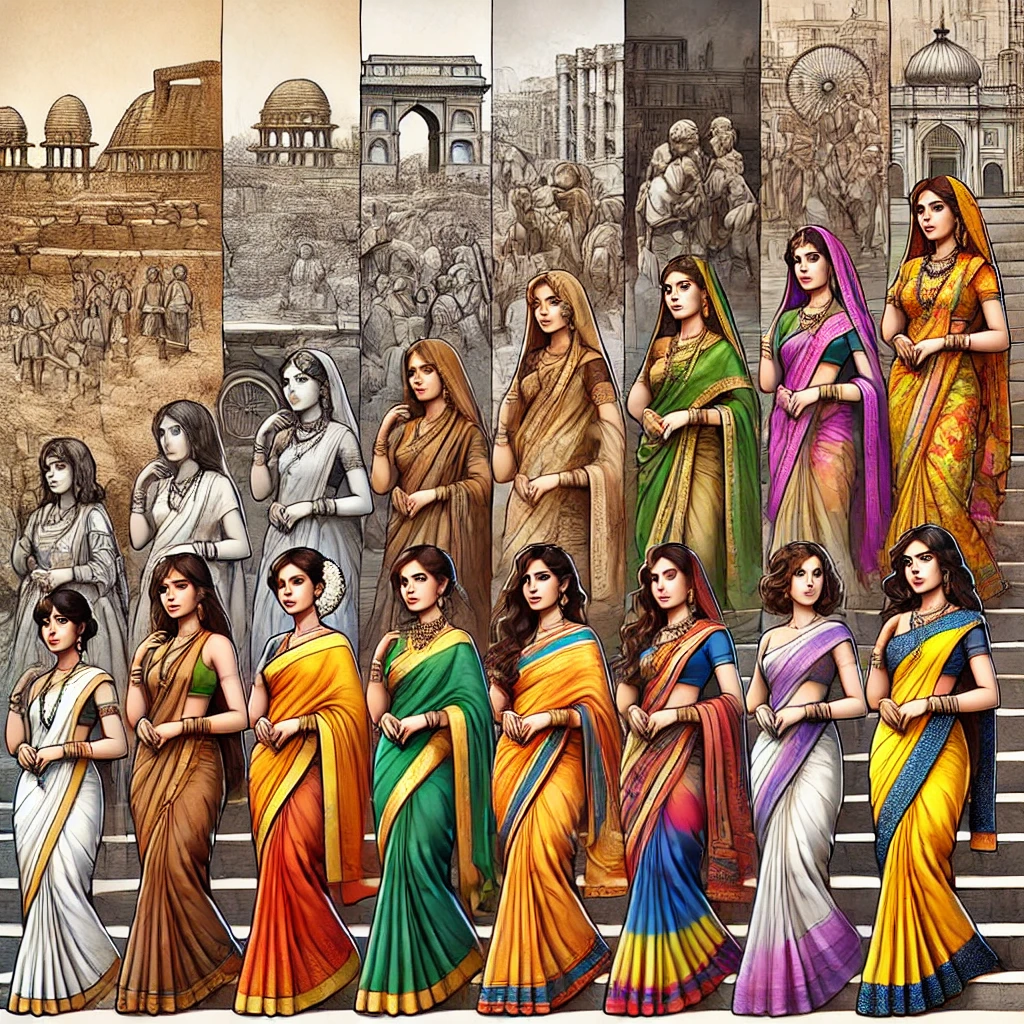
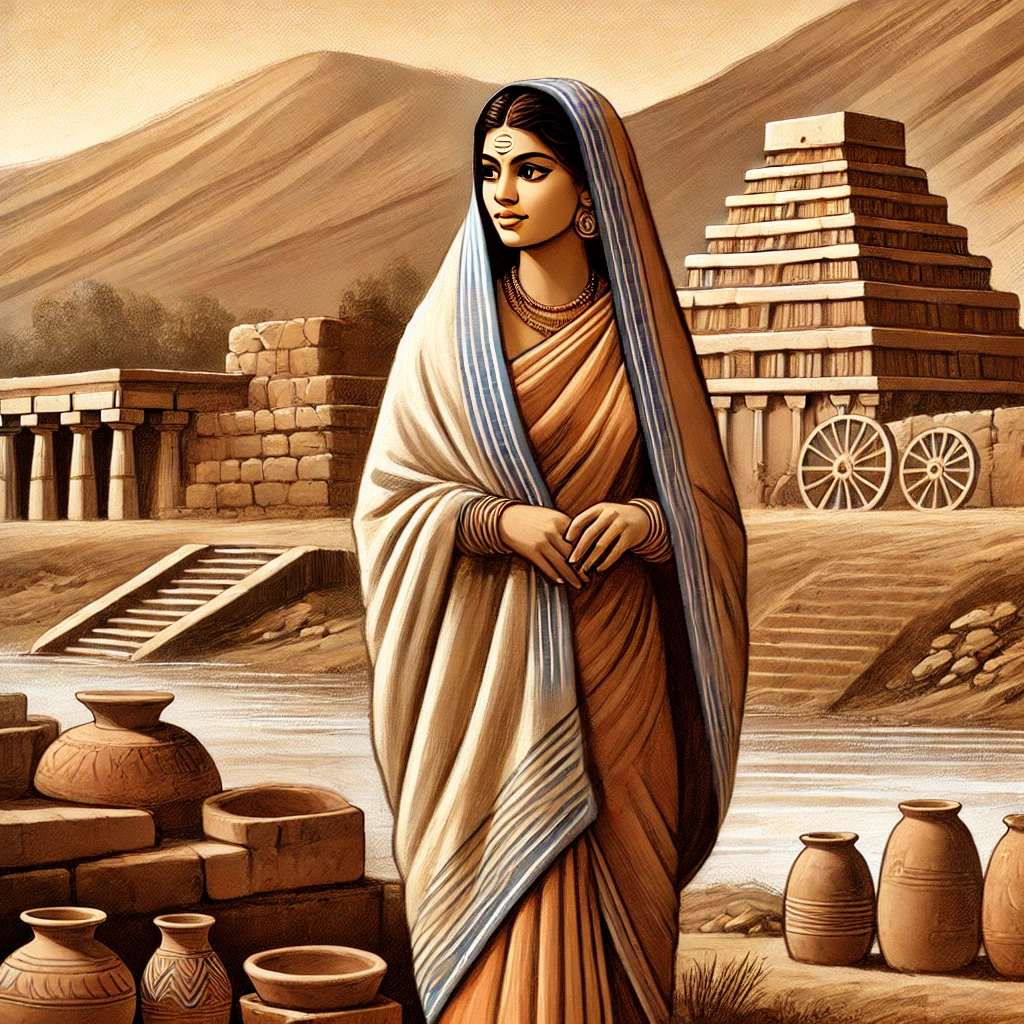
The Birth of a Tradition: Indus Valley Civilization
Our pilgrimage through the annals of time starts more than 5,000 years ago at the bustling settlements of Harappa and Mohenjo-Daro. Here, a terracotta figure depicts a woman dressed in a draped garment very similar to a contemporary saree. Archaeological digs have also given a heady mix of evidence for the weaving of fine cotton dyed using the hues and tones concocted from Mother Nature herself-indigos, turmeric, and madder. Not just beautiful dye jobs, these later dyes were cosmetic-tempering agents also imbuing spiritual meaning into the souls of the people who wore them.
Imagine a woman of that time, by the riverbank, wrapping a length of fabric around her body, completely oblivious that such an innocent act would blossom into the tradition it is today. The full-length saree was born out of necessity; it is comfortable, breathable, and elegant-all the qualities appropriate for the climate of the Indian subcontinent. Nature, utility, and each stitch embedded with wisdom were later diligently passed on from one generation of hands to another.
The Vedic Era: A Sacred Drape
The Vedic period brought with it a change when the saree became not just an article of clothing but a means of dignity and divinity. Ancient texts describe the ‘antariya’ (lower garment), ‘uttariya’ (veil), and ‘stanapatta’ (chest covering)-precursors of the modern saree. These adorned garments were considered impure because they were unstitched, free-flowing as the rivers of civilization nurtured it.
Envision a young woman walking to a temple, the waves of her silk saree glimmering like gold, whispering and dancing softly as the smooth fabric sweeps along her graceful walk. With her head held high, she silently breaks into stirring meditative hymns, all the while knowing that the very saree which embraces her skin has been woven with pious intentions. The saree isn’t merely clothing that drapes over her. Instead, it becomes her lifeline, as well as her connection to the past and her very related progenitors.
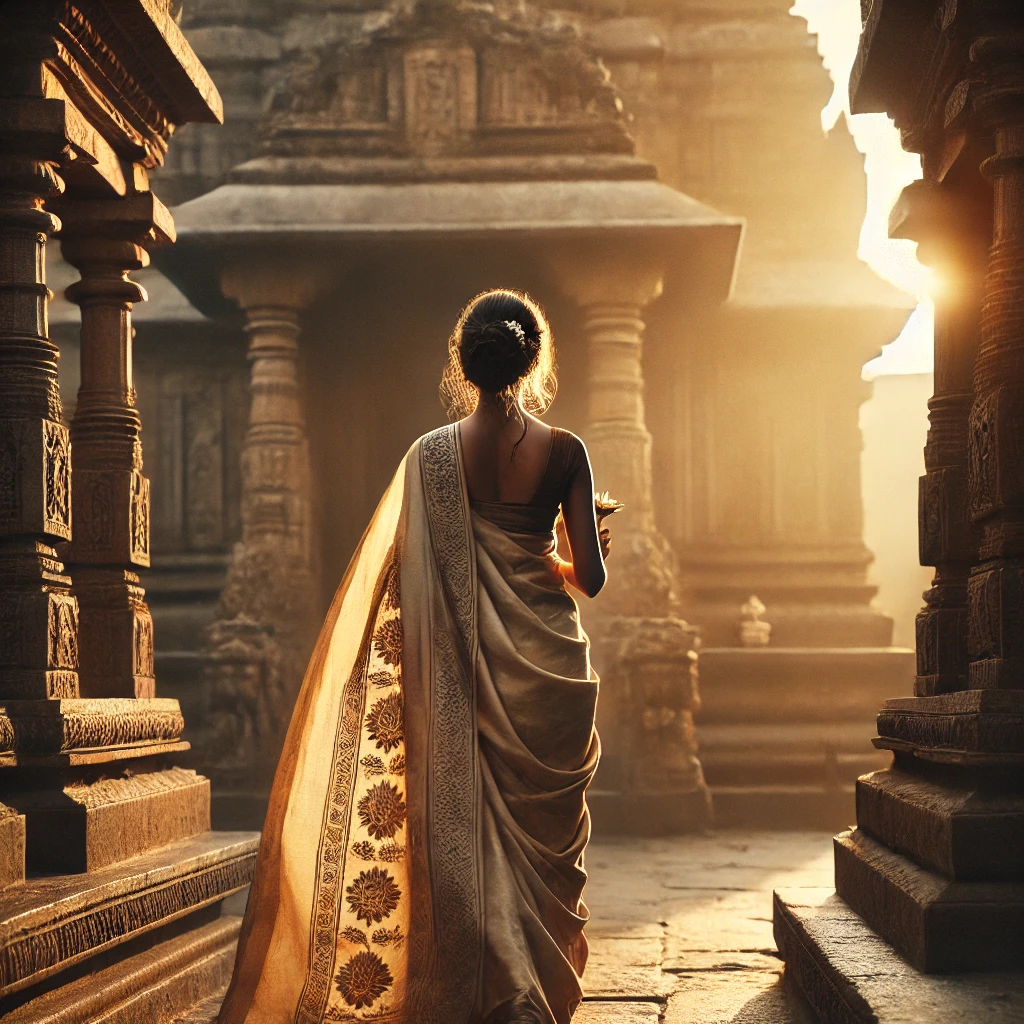

The Weaves of Empires: Mauryan and Gupta Dynasties
The magnificence of Maurya and Gupta’s empires imparted on an age of perfect craftsmanship. Trade flourished, silk from China and gold threads from Persia graced clothing. The saree underwent metamorphosis from simple draping into the finest works of art. The elite wore finely woven muslin, so delicate that it was called ‘woven air.’
A princess of the Gupta dynasty receives a wedding saree-a guarantee of gold embroidery on silk that master craftsmen took months to weave. As she adjusts her pleats, her mother narrates the stories of their ancestors, of the hands that spun the threads, and generations before her who wore such fabrics. In that moment, the young bride not only receives a saree but also inherits a legacy.
The Mughal Influence: Banarasi and Jamdani’s Royal Glow
The Mughal Raj ushered in the wonderful blending of the Persian and Indian aesthetic, leading to sumptuous fabrics like brocade, bedecked with ornate patterns. The period saw the evolution of woven gold and silver threads: the Banarasi silk and Jamdani muslin. Alas! The saree comes to serve as a status symbol—a family heirloom passed down generations.
In a royal courtyard, a Mughal empress reclines upon a velvet divan watching the zari work on her Banarasi saree. The floral motifs tell a story—of blooming gardens, of poetry in Persian script, of months of labor that the artisans put in, all for the sake of designs that were magical. As she touches the golden threads, she feels the weight of history draped around her.
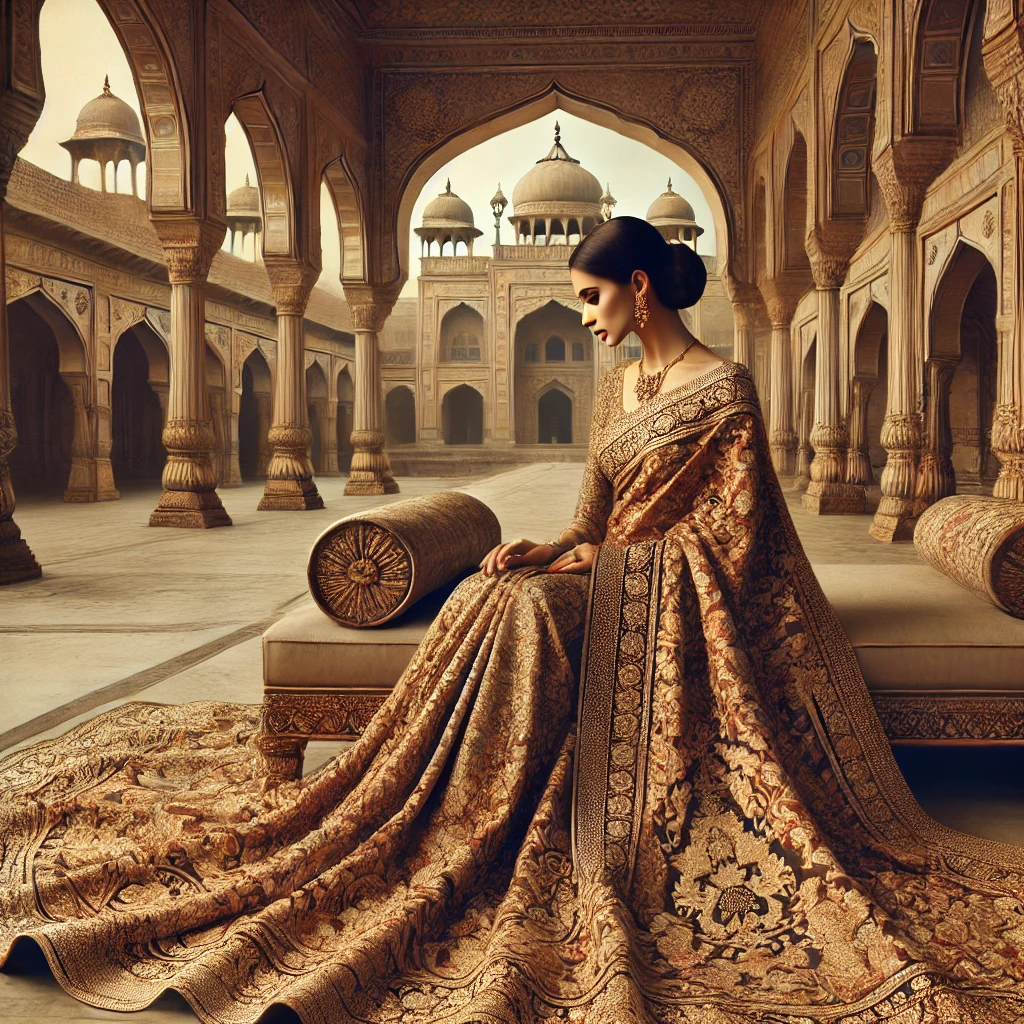
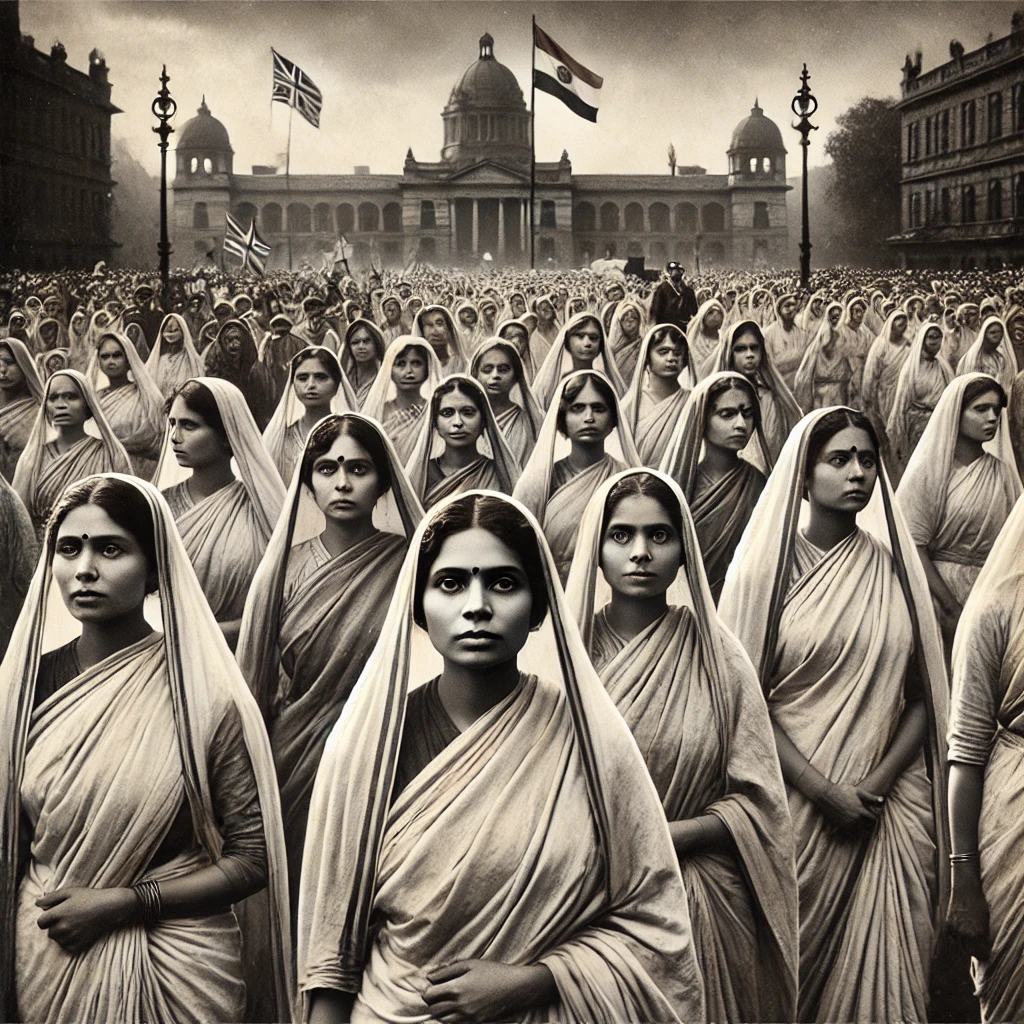
The Colonial Era: The Saree as a Silent Protest
The arrival of the British led to an era of decline for the indigenous handloom, which met its competition against the machine-made textiles. Yet the saree became a symbol of resistance. During the Swadeshi Movement, women turned their backs on foreign fabric and donned Khadi and hand-woven cotton in support of India’s struggle towards freedom.
Here stood a freedom fighter clad in a simple Khadi saree marching defiantly with her sisters against colonial oppression. Her saree is no mere outfit, but a political statement; it is a poor banner for self-reliance. A thread in the saree speaks of defiance, of being not just religious but also resilient and full of aspirations to be free.
Post-Independence: The Saree in a Changing India
After India became independent, the saree was also seen to take another form to accommodate modern life yet standing true to its roots. From adornresses entering boardroom and universities to women in power–saying that this saree was not an antique, but the regalia.
In the court of the young lawyer wearing a luscious, crisp Chanderi saree. That her great-grandmother wore such a saree in the temple decades ago, her grandmother at the next family function and her mother during lecture, at uni. Styles change drapery patterns evolve, but it is most definitely the same essence. A proclamation of connection over timelessness.

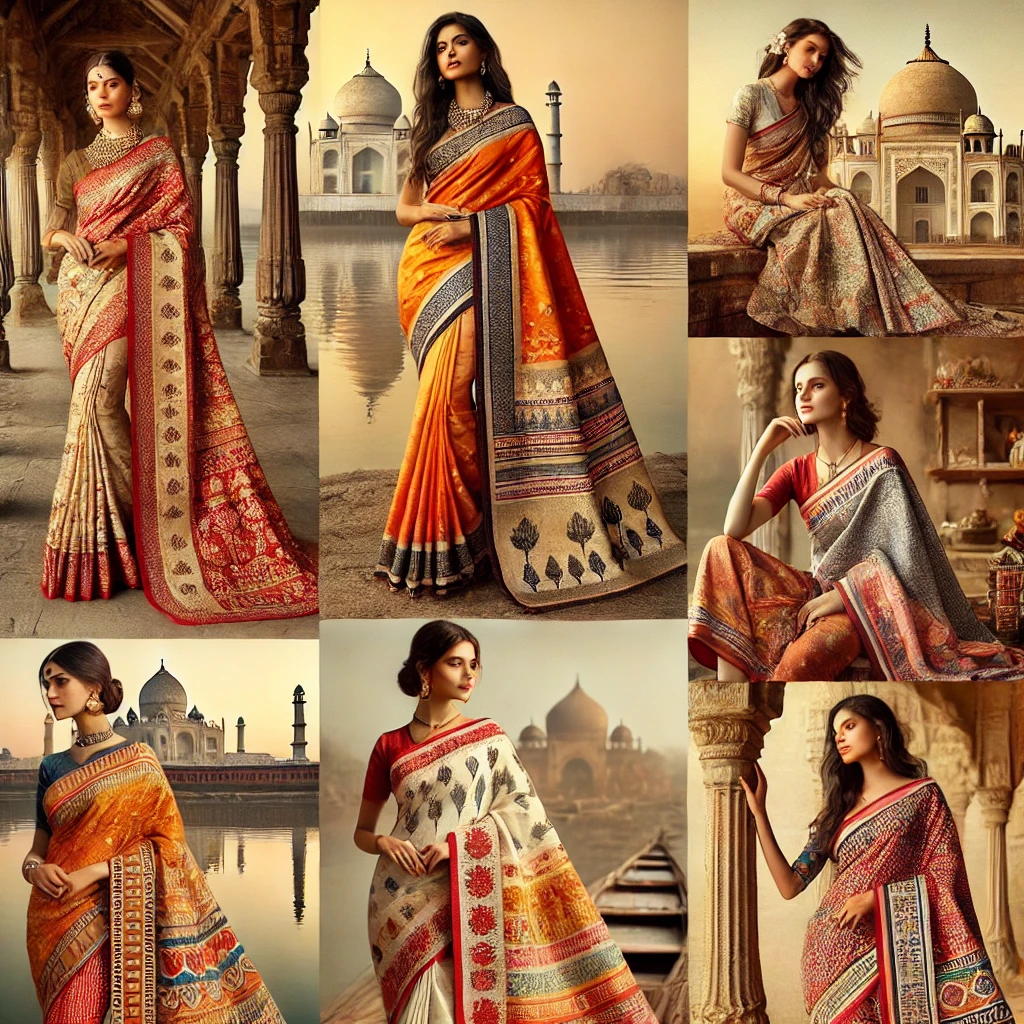
Regional Weaves: The Heartbeat of Indian Craftsmanship
The get-variety of saree in India is like painting. Each part can be defined by its own colour, a story woven into their weave.
Banarasi Silk (Uttar Pradesh): Originating from the Varanasi ghats, these sarees are draped with Mughal-themed motifs and shine with fine zari work.
Kanjeevaram (Tamil Nadu): Temple borders, glorious colors, and pure mulberry silk-this saree is an attire for gods and goddesses.
Jamdani (West Bengal): Woven like air muslin sarees, each motif poetically pays homage to Bengal’s artistic tradition.
Paithani (Maharashtra): An heirloom saree that is an ode encompassing peacock sets and golden threads to the Maratha royalty.
Patola (Gujarat): A double ikat weave whose complexity ensures that one saree can take months to complete.
But times have changed, and the saree is open to outside world now. It has been on the runways of international, in red carpets and across borders festivals.
The Saree Today: A Global Icon
Nowadays, these days the designers fly high in drapes, fabrics and fusions but at the end of it all the saree is always same—beautiful,empowerment factor and eternal.
A woman from New York nowadays wears modern linen saree and is strolling with her head held high into a gallery opening. On the other side of the ocean in Kolkata, a grandmother puts away her single use and folds it while talking about her first evening inspired saree she ever donned as a probably teenager. Saree has been part of the old friend waiting, her color faded, mutual experience, but ever encouraging for them.
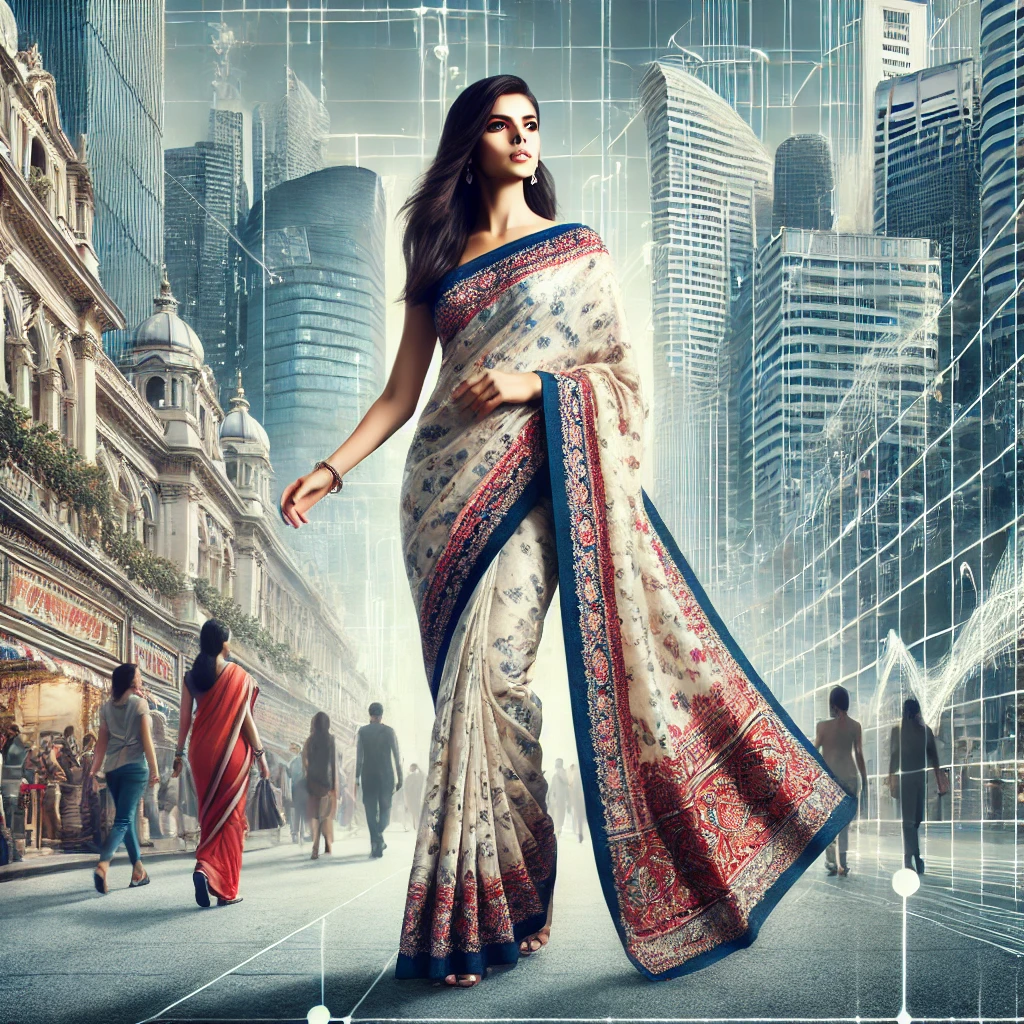
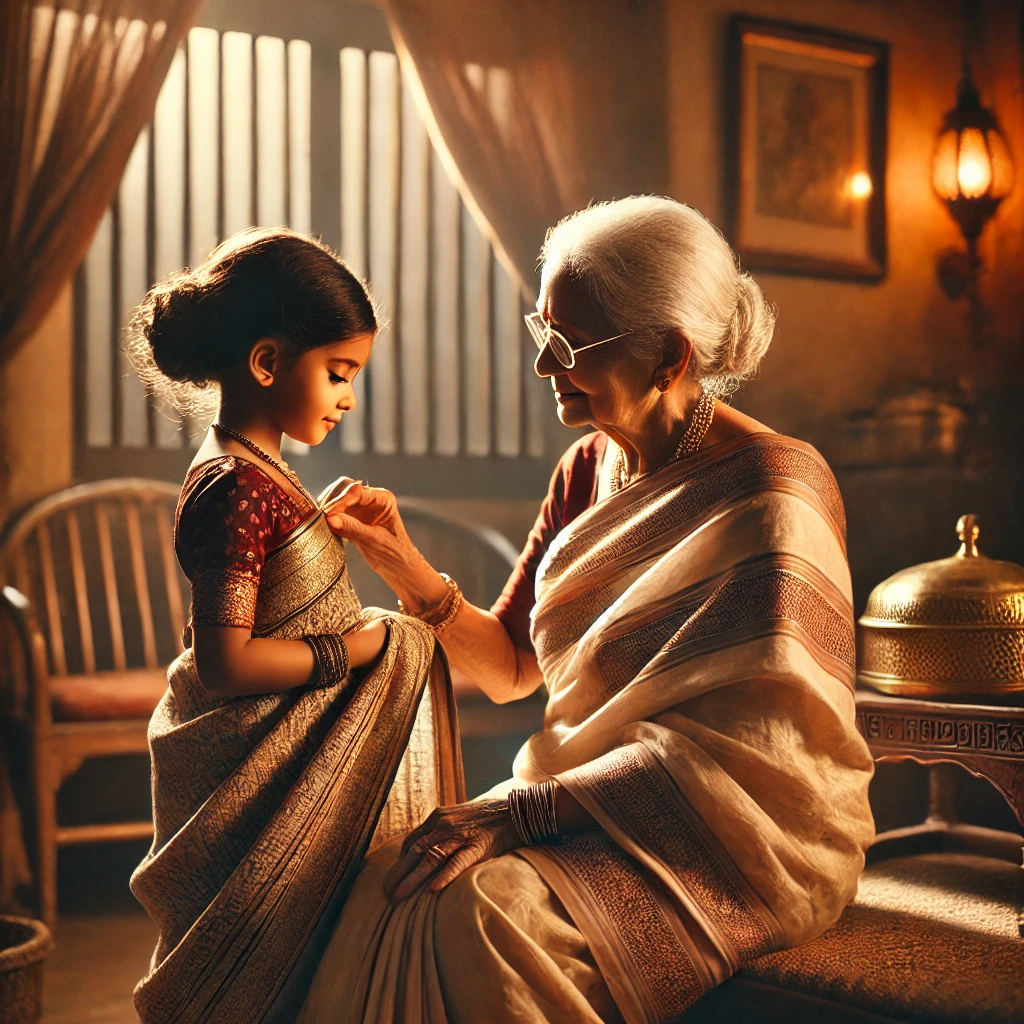
Wrapped in Timeless Tales
The saree is definitely not just a piece of clothing everything. Its an emotion, a nostalgia,a breed that is passed on through generations. Emperors have risen and fallen, worn it liberally as a cloak, stood colonial oppression, adapted to neo-classicism.
When you wear saree,take a slice of your history with you, poetry in time,and honour those who have weaved their dreams into every single inch of the cloth. As we wrap ourselves in these yards, it is fabric but also with us — stories whispered of the past, dreams of the future.
A saree is to be more than just a thread woven, it weaves with Love, legacy and relentless beauty!.
Threads that whisper timeless tales.
